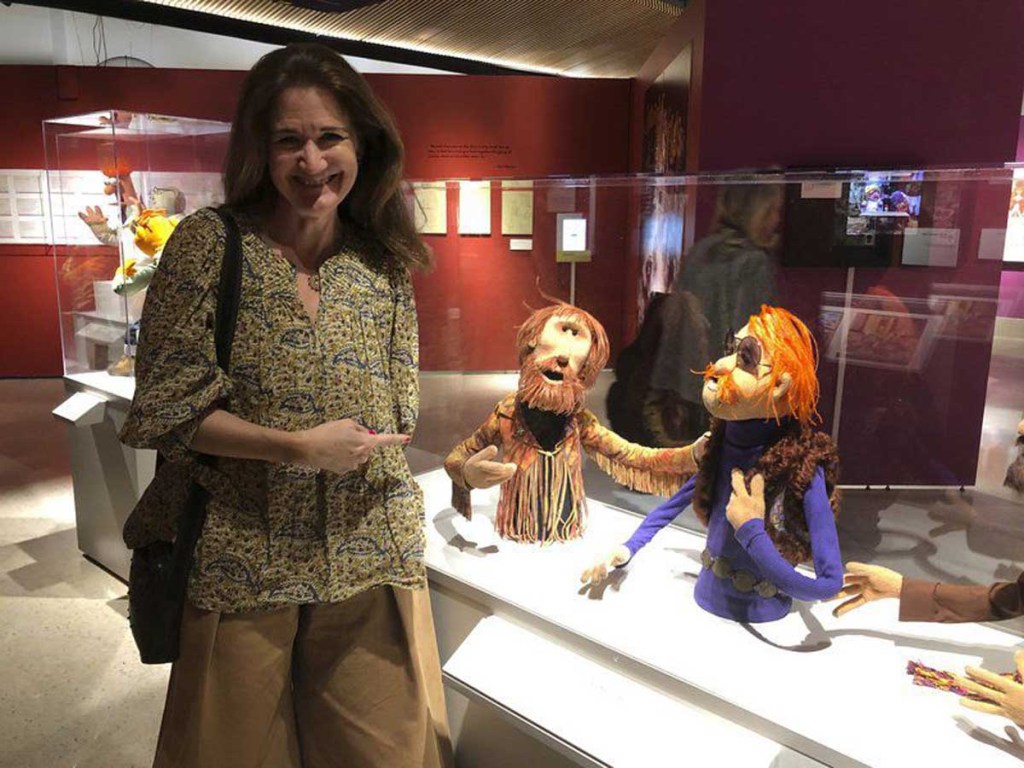Jim Henson exhibit at The Max allows 360 view of artist
Published 5:45 pm Friday, January 11, 2019

- Whitney Downard / The Meridian StarCheryl Henson points to a puppet designed in the likeness of her father, famed artist Jim Henson, at the Henson exhibit at the Mississippi Arts + Entertainment Experience.
Most widely known for his work with The Muppet Show and Sesame Street, some might be surprised to learn that the Mississippi-born Jim Henson frequently played with television as a medium, creating new techniques and shows that cemented his place in cultural history.
“You primarily associate (Jim Henson) with the characters from Sesame Street and The Muppet Show and rightfully so because they’re timeless,” Barbara Miller, the senior curator for the Museum of the Moving Image, said. “But if you dig a little deeper, you really get to know him as a performer or director. An artist in 360.”
Trending
The New York City-based museum hosts a permanent, but smaller, gallery featuring Jim Henson’s accomplishments.
Touring the exhibit at the Mississippi Arts + Entertainment Experience, Jim Henson’s daughter, Cheryl Henson, recalled her father’s “playful irreverence” during his early work, such as a 1965 sales pitch to the Wilson Meat Company.
“My 14-year-old son, he would call it ‘meta,’ ” Cheryl Henson said. “It’s a very irreverent adult sense of humor. He’s making fun of advertising and making fun of himself pitching an advertisement – while also pitching an advertisement… it’s very self-referential. He’s referring to what he was going through while going through it.”
Cheryl Henson said that the individual elements of the exhibit didn’t surprise her, but that Miller, who designed the exhibit at The Max, had brought out so many new elements to the Jim Henson story.
“Even for people who really are fan, there are things here that were not previously available,” Cheryl Henson said. “His thinking was very ahead of its time and sometimes the technology has to play catch-up.”
Jim Henson frequently adapted new and old techniques for his puppetry, including radio technology for remotely moving the mouths of the Gorgs on Fraggle Rock, or making marionette puppets ride bicycles for The Muppet movies.
Trending
Time Piece, Jim Henson’s first film, told a semi-autobiographical tale of an artist trapped in the modern world with only a limited amount of time. The nine-minute short film won an Academy Award in 1965. That and Youth 68, which explored youth culture, soldiers in politicians in 1968, showed a different side of the famous puppeteer.
“He wanted to show a collage without drawing conclusions and without being in any way judgmental,” Cheryl Henson said. “They’re both innovative in how he told the story. Not just visually and musically but with the editing of the celluloid film.”
Aside from his early and experimental work in film, the exhibit features more cherished characters from The Muppet Show, Fraggle Rock or Sesame Street.
“At the same time, you’re meeting old friends and learning that there’s more to Jim’s work,” Miller said.
Throughout Jim Henson’s life, his daughter and Miller point out how he collaborated with others to create the memorable pieces that lasted generations, whether on The Jimmy Dean Show with Rowlf the Dog or with Frank Oz on Sesame Street.
“My father said he cut his chops in comedy with Rowlf the Dog,” Cheryl Henson said. “Working with the experienced comedy writers there who understood the timing of a joke… he learned comedic timing and how to execute comedy.”
Carrying on that spirit of collaboration birthed not only The Jim Henson Company but the generations of artists that followed after Jim Henson.
“This work was created under his leadership and vision,” Miller said. “He was so generous with the people around him. He was really a conductor… there was a team of folks and it was a team effort.”
Even the exhibit at the Max embodied that spirit.
“We are all here to work together and to find out what everybody can contribute,” Karen Falk, the director of archives at The Jim Henson Company, said. “That collaborative effort, that experience, has come down with Jim.”
Being in a Mississippi museum had brought out different elements of the Jim Henson story and how his own life mirrored Kermit’s journey from the swamp to fame. With The Max focusing on the importance of Mississippi artists and aiming to inspire the next generations, Jim Henson’s life served as an example.
“This is sort of taking the big story (of the museum) and focusing deep into one person,” Miller said.
The exhibit showed the hard work Jim Henson put into his masterpieces, whether pushing construction-paper shapes into colorful configurations or developing new puppetry mechanics.
“Whenever we try to tell Jim’s story, we’re showing his body of work,” Falk said. “We’re hoping people will be inspired in their own lives.”
Cheryl Henson echoed the same sentiment.
“It’s empowering people to feel like they can do it for themself,” Cheryl Henson said. “It’s not putting anybody on a pedestal but it’s saying, ‘Hey, this is a cool thing and this is how we did it. You can, too.’ “






